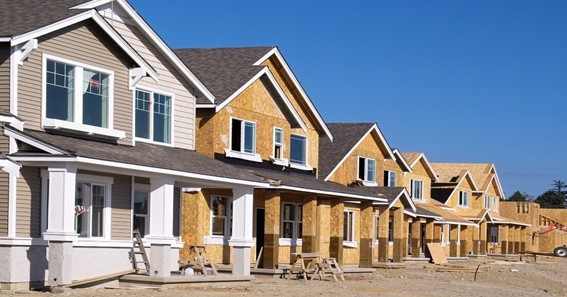When the time comes to purchase your forever home, deciding between a brand-new custom build and a fixer-upper property can be difficult. On top of budget and time restrictions, you’ll need to take an honest inventory of your current and future lifestyle to ensure you make the right call.
Read on to gain insight into the benefits and downfalls of building versus buying and make your way toward your dream home.
Building custom
If you’re leaning toward a custom build and want the facts before making a final decision, read on for the ins and outs of customizing your new home.
Planning for your future
When toying between building new or purchasing used, make sure you factor in future plans when finalizing your decision. Unfortunately, many homeowners find themselves stuck in cramped spaces when their future inevitably sneaks up, throwing everything from children to grandparents to pets into the mix.
Although you can’t plan for an unexpected turn of events, you can give yourself a bit of wiggle room by opting for a custom build. That way, you can throw in a nursery for your future child, invest in a detached in-law suite, or expand your backyard for a furry friend. Plus, by taking advantage of stock house plans, you can save on costs without compromising flexibility.
Less maintenance
A significant benefit of building custom is avoiding the costly maintenance that comes hand in hand with fixer-upper projects. Because everything from appliances to HVAC systems to the foundation will be brand new, you can avoid headache-inducing complications that come with a heavy price tag. Plus, you can allocate any maintenance funds toward dream home additions, like a home cinema or a personal gym.
Energy efficiency
A considerable money-suck in many old-fashioned homes is ineffective energy and insulation standards. Many outmoded houses leak HVAC air through unsealed cracks in doors, windows, and foundations, running up monthly bills. So, while you may spend more upfront building a custom home with all-new appliances, you’ll save significantly in the long run.
Securing a loan
A potential hurdle for those opting for custom builds is securing proper financing to complete the project. Unfortunately, the loan process for custom-made homes is more intensive than a traditional mortgage, requiring special licenses and insurance. However, you can breeze through the steps with minimal roadblocks with proper research and financial advising.
Timing
Perhaps the biggest downside to building a custom home is creating a reasonable timeline and sticking to it. Unfortunately, whipping up a house from scratch is time-consuming and often comes with frustrating delays. Though construction companies will typically estimate three to four months, most homes take an additional month or two to be move-in-ready.
Investing in a fixer-upper
For those uninterested in building a custom home from scratch, consider purchasing a fixer-upper home for a do-it-yourself project. Just make sure you know what you’re getting yourself into to avoid going in over your head.
Less expensive up-front
Often, older homes are more appealing to buyers without a large initial investment. Typically, sellers will slash the price of fixer-upper properties to entice potential buyers and fast-track the sale. If you’re willing to take on the challenge and spruce-up aging features, a used home may be the perfect option for you. However, make sure to do a thorough walk-through and inspection before purchase to sidestep costly expenses or undisclosed damages.
Less waiting
If you’re itching to move into a new space as soon as possible, a pre-existing home may be preferable to a custom build. Though you may lack the flexibility, you can circumvent lengthy wait times that come along with customizable blueprints.
Unexpected Issues
Unfortunately, you never know what you’re going to find when the time comes to renovate an old-fashioned home. Once you dig in, you’re bound to find unexpected damages and obstacles that will come with their own set of costs and frustrations. Prioritize and pay close attention to any plumbing, gas line, or structural issues, as those will be non-negotiable fixes.
Long-term construction
Though move-in times may be significantly less than a custom build, fixer-uppers often have more construction in the long run as unexpected renovations pop up. Make sure you understand the task at hand before you invest in a run-down home to avoid regret and financial setback.
It’s not uncommon for fixer-uppers to become an all-consuming, slow-moving project, meaning your home could potentially be a long-term construction zone.
Hidden costs
While the initial price tag may be smaller, beware of buying a fixer-upper to save money. Instead, make sure to research home prices in your area. In some markets, fixer-uppers aren’t much cheaper than existing homes and require more maintenance.
Get ready for inspections
Home inspections are an unavoidable aspect of large-scale remodels. At the very least, you’ll need a building and pest inspection to alert you of any structural issues that might put a hold on your reno plans.
Parting shot
Whether you opt for a custom home build or dive into an extensive fixer-upper, make sure you understand the benefits and downfalls of each. If you’re itching for a challenge and are passionate about self-renovating, a discounted old-fashioned property may be perfect. However, if you hope to invest more upfront to reduce upkeep costs and maintain flexibility, building custom is the way to go.






